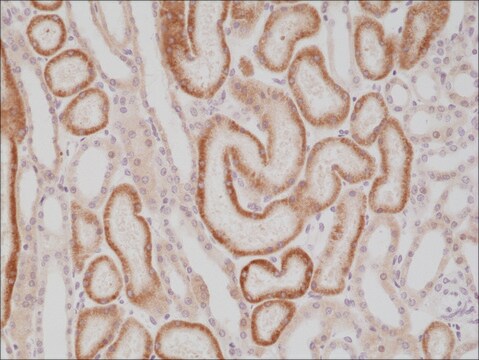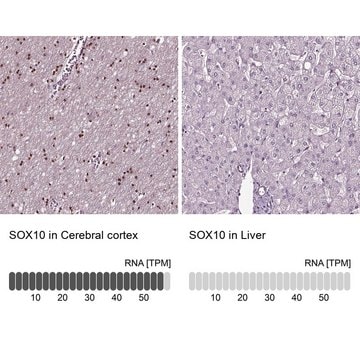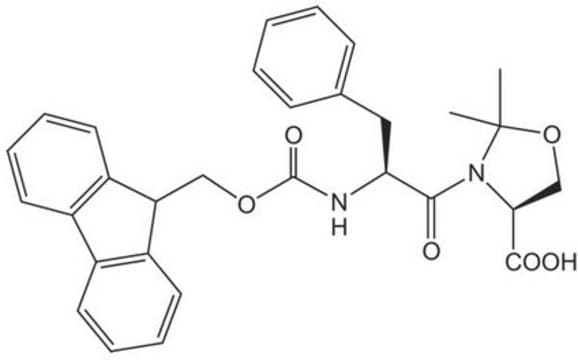383A-7
SOX-10 Rabbit Polyclonal Antibody
unconjugated, Cell Marque™
About This Item
Prodotti consigliati
Origine biologica
rabbit
Livello qualitativo
100
500
Coniugato
unconjugated
Forma dell’anticorpo
Ig fraction of antiserum
Tipo di anticorpo
primary antibodies
Clone
polyclonal
Descrizione
For In Vitro Diagnostic Use in Select Regions (See Chart)
Forma fisica
buffered aqueous solution
Reattività contro le specie
human
Confezionamento
vial of 0.1 mL concentrate (383A-74)
vial of 0.5 mL concentrate (383A-75)
bottle of 1.0 mL predilute (383A-77)
vial of 1.0 mL concentrate (383A-76)
bottle of 7.0 mL predilute (383A-78)
Produttore/marchio commerciale
Cell Marque™
tecniche
immunohistochemistry (formalin-fixed, paraffin-embedded sections): 1:25-1:100
Controllo
melanoma, schwannoma, skin melanocytes
Condizioni di spedizione
wet ice
Temperatura di conservazione
2-8°C
Visualizzazione
nuclear
Informazioni sul gene
human ... SOX10(6663)
mouse ... Sox10(20665)
Categorie correlate
Descrizione generale
SOX-10 is diffusely expressed in schwannomas and neurofibromas. SOX-10 reaction is not identified in any other mesenchymal and epithelial tumors except for myoepitheliomas and diffuse astrocytomas. SOX-10 expression is seen in sustentacular cells of pheochromocytomas and paragangliomas, and occasionally carcinoid tumors from various organs, but not in the tumor cells.
In normal tissues, SOX-10 is expressed in Schwann cells, melanocytes, and myoepithelial cells of salivary, bronchial, eccrine, and mammary glands. SOX-10 expression is also observed in mast cells in a variety of tissues and organs in both nuclear and cytoplasmic reaction.
Qualità
 IVD |  IVD |  IVD |  RUO |
Linkage
Stato fisico
Nota sulla preparazione
Altre note
Note legali
Not finding the right product?
Try our Motore di ricerca dei prodotti.
Codice della classe di stoccaggio
12 - Non Combustible Liquids
Classe di pericolosità dell'acqua (WGK)
WGK 2
Punto d’infiammabilità (°F)
Not applicable
Punto d’infiammabilità (°C)
Not applicable
Certificati d'analisi (COA)
Cerca il Certificati d'analisi (COA) digitando il numero di lotto/batch corrispondente. I numeri di lotto o di batch sono stampati sull'etichetta dei prodotti dopo la parola ‘Lotto’ o ‘Batch’.
Possiedi già questo prodotto?
I documenti relativi ai prodotti acquistati recentemente sono disponibili nell’Archivio dei documenti.
Articoli
IHC antibodies enhance dermatopathology beyond H&E stained slides, improving techniques and applications for dermatological research.
Contenuto correlato
Trusted IVDR-ready supplier of high-quality Cell Marque™ antibodies for diagnostic pathology and IHC, ensuring reliability and expert support.
Il team dei nostri ricercatori vanta grande esperienza in tutte le aree della ricerca quali Life Science, scienza dei materiali, sintesi chimica, cromatografia, discipline analitiche, ecc..
Contatta l'Assistenza Tecnica.








